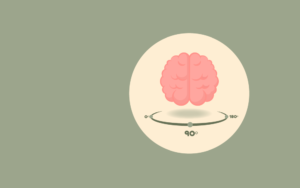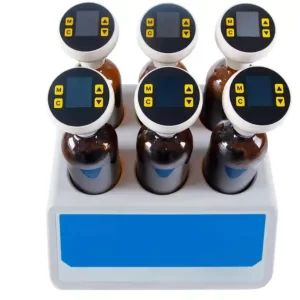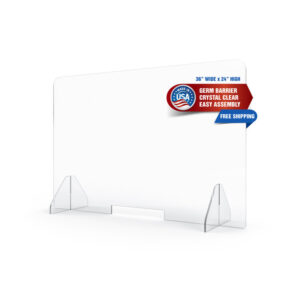
Virtual Reality: Healthcare and Biomedical Research
Overview Virtual reality was first experienced as the world’s first flight stimulator Link Trainer by Edwin Link (1929) and later as the interactive theatre ‘Sensorama’

1 in every 3 older adults (over 65 years old) will experience a fall that may put his/her life in danger due to fall-related injuries. This has motivated scientists and physicians to approach this problem with many different angles. Research efforts mostly target prevention of another accident, identification of the risk factors associated with falls and/or promotion of quick detection of falls in order to provide assistance. Most research data were collected from patients that had already experienced at least 1 fall by employing non-digital balance/gait tests and fall history surveys.[1]
However, the study of falls needs to be less retrospective and more preventive to be truly fruitful. This began a quest for researchers to find better methods to understand the mechanisms behind falls, predict when a fall might take place, determine the vulnerable population and apply a series of measures to significantly decrease the risks.[2]
This article will help you understand the role of digital tools in collecting information to research fall risk/prevention in the geriatric population.
Among the most common environmental factors; the absence of handrails in stairways, uneven floors, and rugs in hallways stand out as the most frequent risk factors for fall among older people.[3]
Research shows that most digital methods for data gathering don’t take environmental factors into consideration. This may be due to the fact that these factors are considered less informative than individual factors.[4] For the purposes of prediction and categorization of fall injury, environmental factors have been observed to receive less attention by digital tools.
Individual factors for fall risk are muscle weakness, poor balance, gait problems, visual problems, limited mobility, cognitive problems, impaired vision and blood pressure. These factors are the most frequently used factors for diagnosis and risk assessment.[4] Thus they are also the most widely used factors by digital tools to collect data for fall research. Individual factors are studied by way of sensors, surveys, cameras, etc.[5]
Classically, fall risk/prevention study researchers used a collective gathering of information based on various physical tests such as:
Also, most studies complement these tests results with medical records, mental status examinations, questionnaires like the activities-specific balance confidence and the modified falls efficacy scale or some altered version of them.[8]
Many digital tools incorporate some of these methods or a modified version of them as part of their data gathering methods. The most innovative aspect of digital tools is the way they use these tests to collect and simultaneously process data.
Let us look into the various digital tools that have been designed with the integration of classic tools and modern technology.
This is a well-known method to assess balance and distinguish between sensory, motor, and central adaptive functional impairments. This tool is meant to be used as a complement to other types of balance tests. CDP requires specialized equipment (harness, platform, display screen, software, chamber, etc) that can only be found in healthcare institutions. During this test, the patient is placed inside an open chamber on top of a platform facing a display. The subject is then exposed to 6 different conditions.
The subject’s movements are detected by the platform. Each test will challenge the patient to keep balance, forcing him/her to make physical adjustments (weight, feet position, etc). The associated software then processes the data (including weight and height) and displays it in the form of performance score graphs. It then compares the results to reference values to determine the presence of any issues.[13][14][15] This method can be of great value in assessing individuals with fall risk factors due to balance problems.
Electronic sensors can be utilized to obtain data on environmental and individual risk factors that led to a fall. Data collected via sensors can accurately determine the series of events that led to a fall and subsequently develop ways to prevent such events in the future.
Vision-Based Sensors (VBS)
VBS are among the first sensors used for fall research to observe the difference between falls and normal behaviors.[16] Studies were conducted placing several markers on the bodies of patients and tracking vertical and horizontal velocity. The study discovered that falls could be easily differentiated from other kinds of movement.[17] The “Silhouette Classification” technique using vision-based sensors to provide high quality data about fall detection, gait, and body sway by creating a 3D silhouette.[18] A major concern of vision-based monitoring systems is the need to maintain the privacy of those being monitored.
Ambient Sensors (AS)
An ambient sensor is embedded in an electronic device, so that it can detect the light quality and intensity outside. The sensor is made to mimic the function of your eye. Not many studies incorporate them as a way to gather information. However, one excellent example is the “SHIMMER”, a very comprehensive device that evaluates movement, physiology and the environment. It is able to do this by having an accelerometer and gyroscope to measure movement (speed and orientation) and a small device to perform electrocardiograms. The main “environment-sensing” aspect of this device is achieved thanks to an infrared sensor (proximity), temperature and light sensors, and vibration sensors. This equipment uses a very simple operating system (TinyOS). It can stream data in real time; can transmit data through Bluetooth and store information in an SD card.[21] It may be important to mention that ambient sensors are usually used for fall detection. So far they have been extremely useful in that particular field.[16] Although, SHIMMER is not widely used for research purposes, it has potential to be used as a sensor incorporated into cameras to detect falls.
Kinematic Sensors (KS)
KS are the most popular sensors used for research and mostly includes an accelerometer and/or a gyroscope. KS are frequently used not only to study movement, but also to provide data for fall risk. Accelerometers, gyroscopes and magnetometers have been used in combination with softwares to perform clinical tests with the objective of determining fall risk among elderly patients.[16],[21]
Apps and other kinds of software that don’t rely on specialized hardware are also gaining a lot of attention. Some of them are already used for research purposes and others are still being developed. Next, we shall briefly look into various studies that have been conducted regarding the effectiveness of mobile device applications for fall risk/prevention study.
The “Aachen Fall Prevention App” (AFPA), is a health application designed by Peter Rasche et al., and released on December 2015. It is the first mobile Health application to be used as a digital research tool in a study to evaluate the app’s usefulness in detecting falls. It empowers older patients to self-assess and monitor their individual fall risk. It also uses the patient’s input and simple balance tests to report a fall risk value from the Aachen fall risk scale.[6]
Peter Rasche, Alexander Mertens, Christina Bröhl et al
Older patients (persons 50+ years)
79 participants
The data collected is between the period from December 2015 to December 2016. The AFPA scale shows a significant positive relationship between objective fall risk and the self-assessed subjective risk.
The study shows AFPA to have promising results with significant efficacy in raising awareness among older adults of their individual fall risk using a patient-driven fall risk assessment app.
The Video Incident Review app is a customized mobile device app through which video recorded of falls in elderly adults in a dementia care facility were reviewed. The video data were transmitted using Wi-Fi to local network attached storage (NAS) devices. The local NAS stored the video for 72 hrs, and it was then transmitted to a university server. A customized mobile device app was developed by the makers of the NAS for viewing video from the previous 72 hours. The app recorded only motions thereby filtering unnecessary video. It was used for research in 2017 by Eleonore Bayen et al. to evaluate events preceding fall incidents in older adults, in order to prevent these events from occurring in the future and thus gain reduction in fall rates in elderly care facilities. The cameras monitored the elderly adults by recording videos of the residents 24 hrs a day over a period of 3 months.[7]
Eleonore Bayen*, MD, PhD; Julien Jacquemot* et al
older adults (over 65) from a memory care facility with dementia
A video camera was used to monitor the residents of an elderly memory care facility for 24 hours a day using 43 cameras mounted on walls within the residency. The summary and review of the events monitored by the app were provided to the facility staff using a customized mobile device app. It analyzed the outcome based on the count of residents’ falls happening in the video-covered areas, the acceptability of video recording, the analysis of video review, and video replay possibilities for care practice.
To evaluate events preceding fall incidents in older adults in order to prevent future recurrence of these events
16 falls were observed via the video cameras in a period of 3 months. Capturing the fall using recorded video-enabled assessment of environmental and individual cognitive risk factors that contributed to the fall.
Video monitoring provided information on ways to prevent falls by updating facility care and providing a safer environment for the residents.
The iFall app was developed by Frank Sposaro and Gary Tyson from Florida State University in 2009. It is a good example of an integration of mobile technology and kinematic sensors (KS). This is an Android app meant to function as an alert system. It uses the user’s input and the integrated smartphone’s accelerometer to detect falls (drops in acceleration amplitude) and emit notifications to inform a third party of the event. This app’s algorithm was specifically calibrated to minimize false positives by taking into consideration the age, height, weight and level of activity of every user. Therefore, this app is excellent to keep track of fall frequency for prospective studies and its design makes it easy to use by elderly individuals. An independent case study revealed that the iFall is capable of detecting falls effectively in many different scenarios. [16][17]
Frank Sposaro and Gary Tyson from Florida State University
older patients (persons 50+ years)
The study performed a series of indoor experiments in which individuals would walk, run and fall in different scenarios (falling forward, backward, stumbling, falling over an obstacle, etc). The app itself, however, uses acceleration data only, but its developers took into account previous studies about acceleration amplitude and new information from running/walking experiments to optimize the detection threshold.
The app was originally developed with the objective of automatically differentiating falls from other kinds of movements in several different settings using a wearable sensor.
Real time acceleration and angle data were collected. In each case, the rotation and acceleration parameters for falls were detectable. [29]
The study concluded that the final product of the app was able to identify falls only, using information from the smartphone’s accelerometer. [16]
The FRAT-up system is a fall evaluation system for the elderly designed in 2014 by Luca Cattelani et al., from the University of Bologna in Italy. This technology is a web-based desktop software and smartphone application that follows a different approach than the others. The FRAT-up doesn’t use a pre-established fall risk survey or scale; instead, it uses a new rule-based approach based on a review of contemporary literature. It is basically an assessment tool for evaluating the risk of a subject aged 65+, to experience a fall within a year.
Luca Cattelani, Federico Chesani, Pierpaolo Palumbo, Luca Palmerini, Stefania Bandinelli, Clemens Becker, and Lorenzo Chiar from the University of Bologna in Italy
older patients (persons 50+ years)
This technology is web-based desktop software and smartphone application that uses a new rule-based approach based on a review of contemporary literature. The software is programmed to handle a very large variety of risk factors (mainly individual) without requiring a minimum number of them to produce a result. The risk assessment is computed on the basis of general information about the health status of the subject, provided by the user through a simple web-based interface.
To determine if the software could reliably predict falls.
Data from a 9-year long prospective study on fall frequency and information about fall risk factors from over 970 patients was gathered. The data from patients was used to predict the fall risk for each individual and contrast it with the reported risk in the study calculated with traditional tools like the Tinetti balance scale.
Based on the data collected, the study concluded that FRAT-up is comparable with the Tinetti balance scale and the Timed up and go test as a tool to assist with fall risk assessment.[14]
The following is a short list of recommendations for fall research using digital tools like the ones described in this article. These recommendations are based on current practices and commentary from active researchers [6][16][17][18][19]
While digital tools have huge potential in researching fall risk factors and prevention, age barrier can be a major limitation to successfully employ modern technology as research tool in geriatric populations.

Overview Virtual reality was first experienced as the world’s first flight stimulator Link Trainer by Edwin Link (1929) and later as the interactive theatre ‘Sensorama’

Episodic Memory Human long-term memory can be broadly classified into declarative memory and procedural (implicit) memory; The former category involves conscious and intentional recollection of

Self-Awareness Consciousness by most of the scientific community is recognized as an outward awareness of one’s environment and body, while self-awareness is the recognition of

Need Digital Health Services for your research? Click here Questionnaires, Data Forms & Research Medical research and data go hand in hand. Often, to






DISCLAIMER: ConductScience and affiliate products are NOT designed for human consumption, testing, or clinical utilization. They are designed for pre-clinical utilization only. Customers purchasing apparatus for the purposes of scientific research or veterinary care affirm adherence to applicable regulatory bodies for the country in which their research or care is conducted.